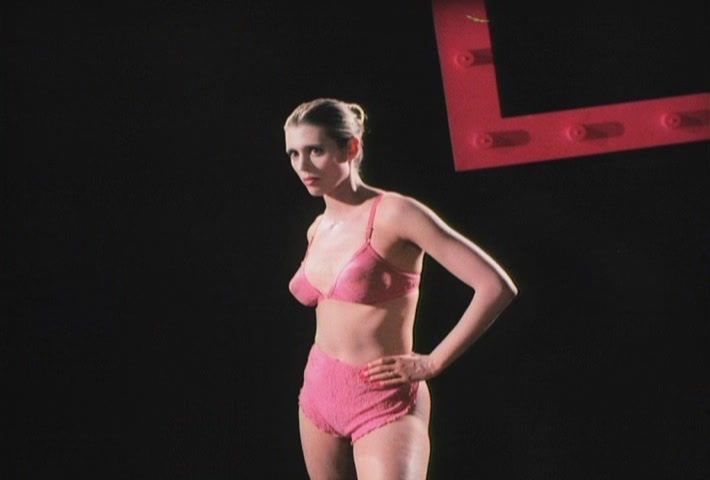
Dr. Caligari (1989) picks up narratively and aesthetically where Robert Wiene’s masterpiece of silent cinema, Das Cabinet des Dr. Caligari (1920), left off. The expressionistic stylization of Wiene’s film that intentionally recalled the bombed out structures and decay of WWI have been substituted for a landscape of mutated flesh and clinical instruments rendered in bold, harsh colors. The traumas of WWI have drifted into history, supplanted by the more recent epidemic of AIDs.
Dr. Caligari may have its earliest aesthetic roots in the German Expressionist films of the Weimar era, but it is really the culmination of seventy years of stylistic invention in reaction to twentieth century history. A line could be drawn from Das Cabinet des Dr. Caligari to Cobra Woman (1944) to Der Tiger von Eschnapur (1959) to The Forbidden Zone (1980), One From The Heart (1981), and Geek Maggot Bingo (1983). Throughout this period color became a dominant factor as post-modernism intersected with Expressionism while simultaneously film art shifted the social emphasis further into the sexualized art forms of adult and erotic films.
Director Stephen Sayadian, co-writer Jerry Stahl, and composer Mitchell Froom had previously collaborated on some avant-garde adult films, including the classic Café Flesh (1982), before collaborating on Dr. Caligari. Sex in these films is the point at which filmic texts intersect. In Dr. Caligari this intertextual complex draws on MTV, pornography, Antonin Artaud’s Theatre Of Cruelty, and of course German Expressionism. The myriad of ways that these different forms address human sexuality and the popular culture of sex is what Dr. Caligari is about. Be it gender roles, gender identity, sexual orientation, fetishization, or those things too taboo for the mainstream, Dr. Caligari is a film that features it all and embraces it as part of a primally human expression.
The filmmakers embrace cinematographic form in much the same way that the titular character interacts with the human body. Both forms are malleable extensions of the human mind that are fit for experimentation. Dr. Caligari (Madeleine Reynal) physically distorts the human body and perverts the mind just as the filmmakers distort the form, pervert the image, and assault the audience’s expectations and moral sensibilities. Dr. Caligari is a bomb thrown into Reagan era conservatism; blasting away those value systems that marginalized queer culture, villainized HIV carriers, and silenced a generation’s sexuality.
The brilliant production design of Dr. Caligari makes the images powerful and aggressive weapons against the heavily codified status quo of American mainstream cinema. Nothing looks or sounds like Dr. Caligari for it is the pinnacle of trashy pop culture as high art. The big, loud pictures that comprise the film are only equalled by the broad, campy performances of the actors. Dr. Caligari takes the modus operandi of John Waters and Richard O’Brien and pushes them to the extremes of Expressionism in an exuberant display of cultural conquest.
This veritable fantasia, a cavalcade of dream images and fetish objects, has languished as an obscure cult film curio for too long. Now is the time for Dr. Caligari to enter the popular canon. It is the moment for a critical reassessment and mainstream acceptance of Sayadian and Froom.
